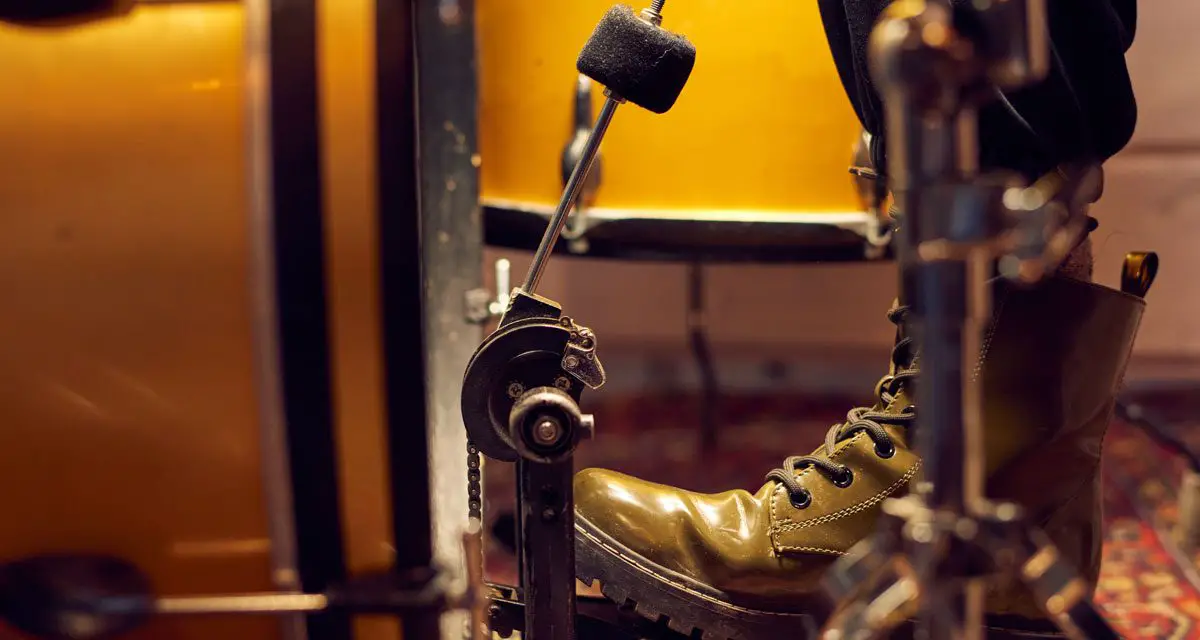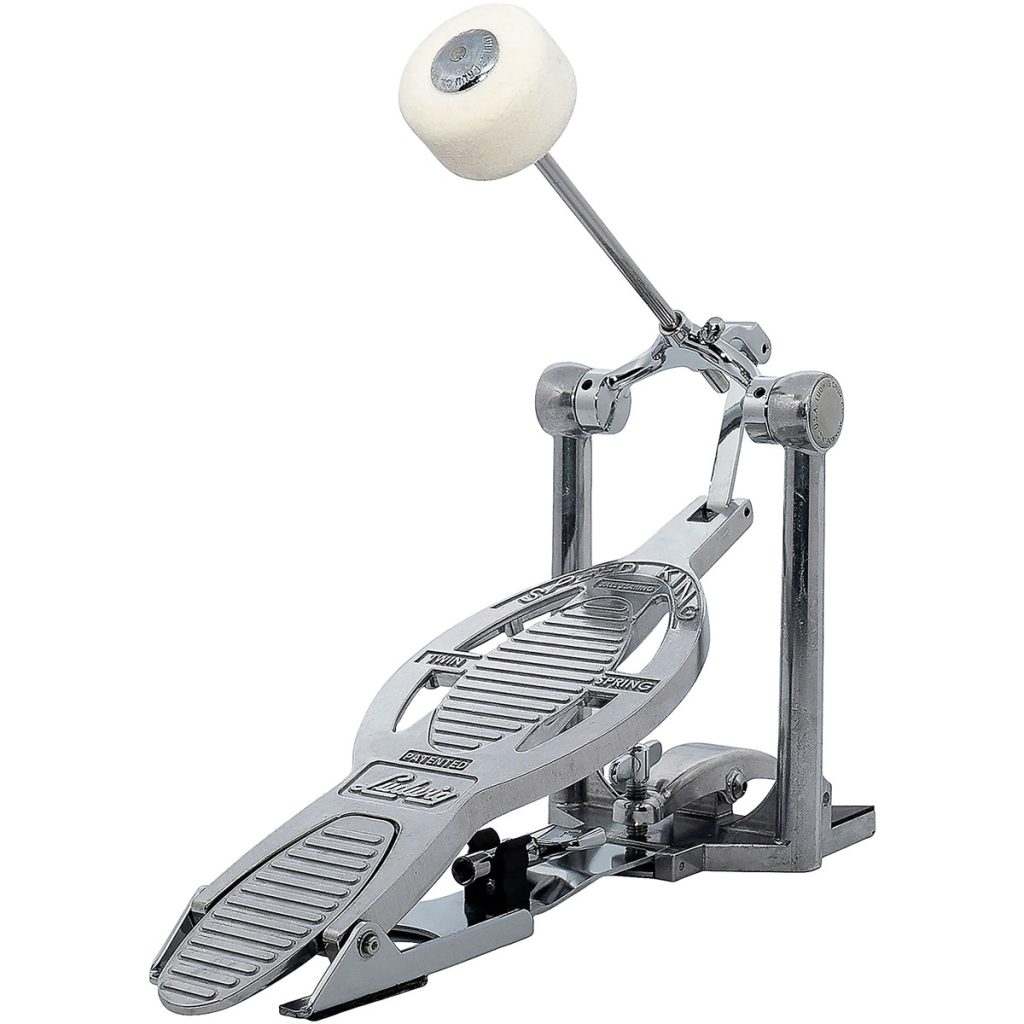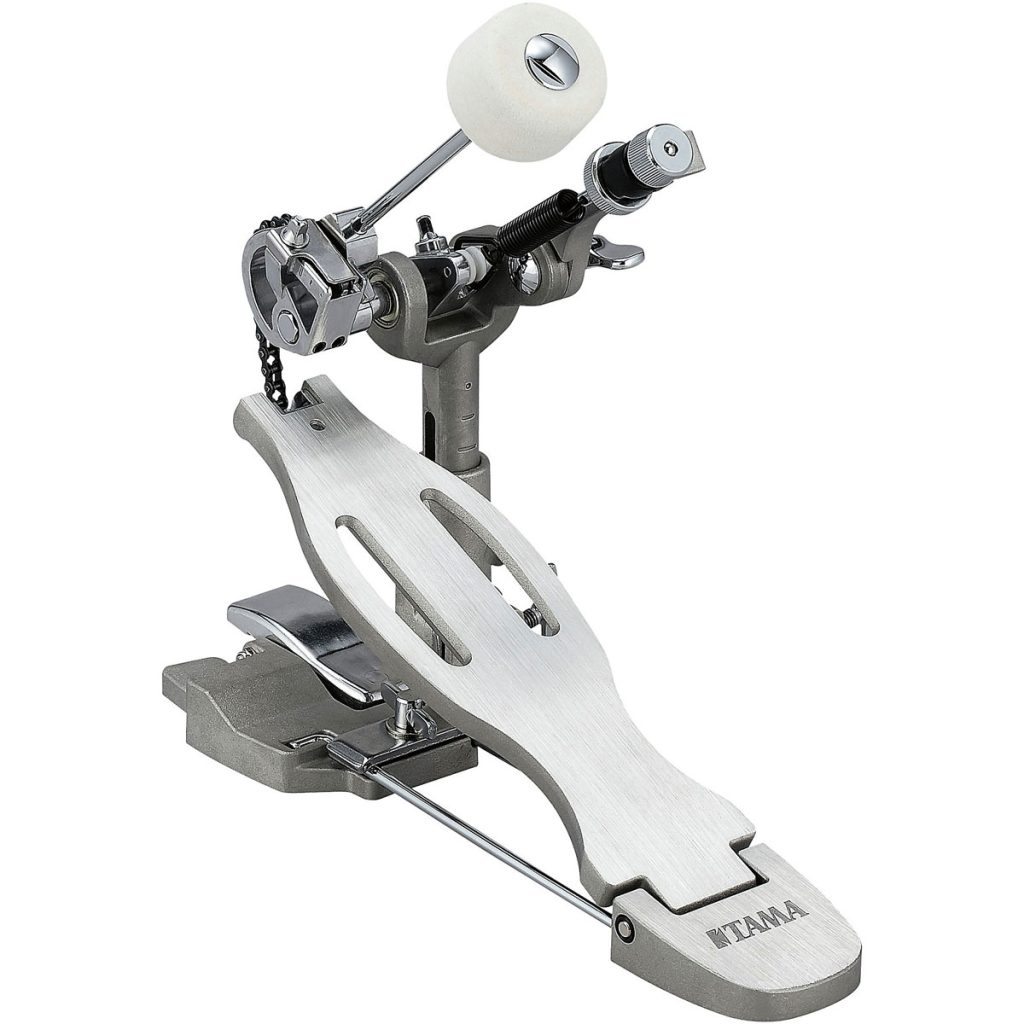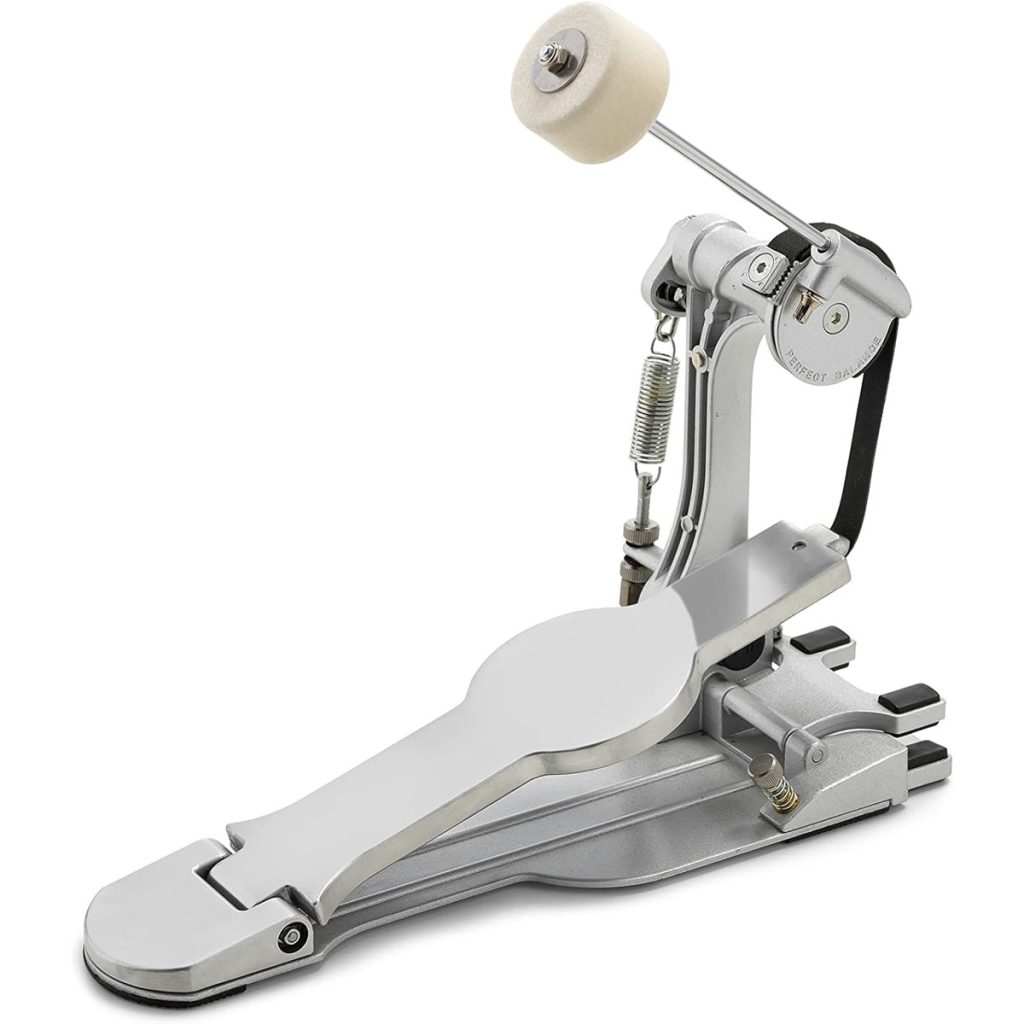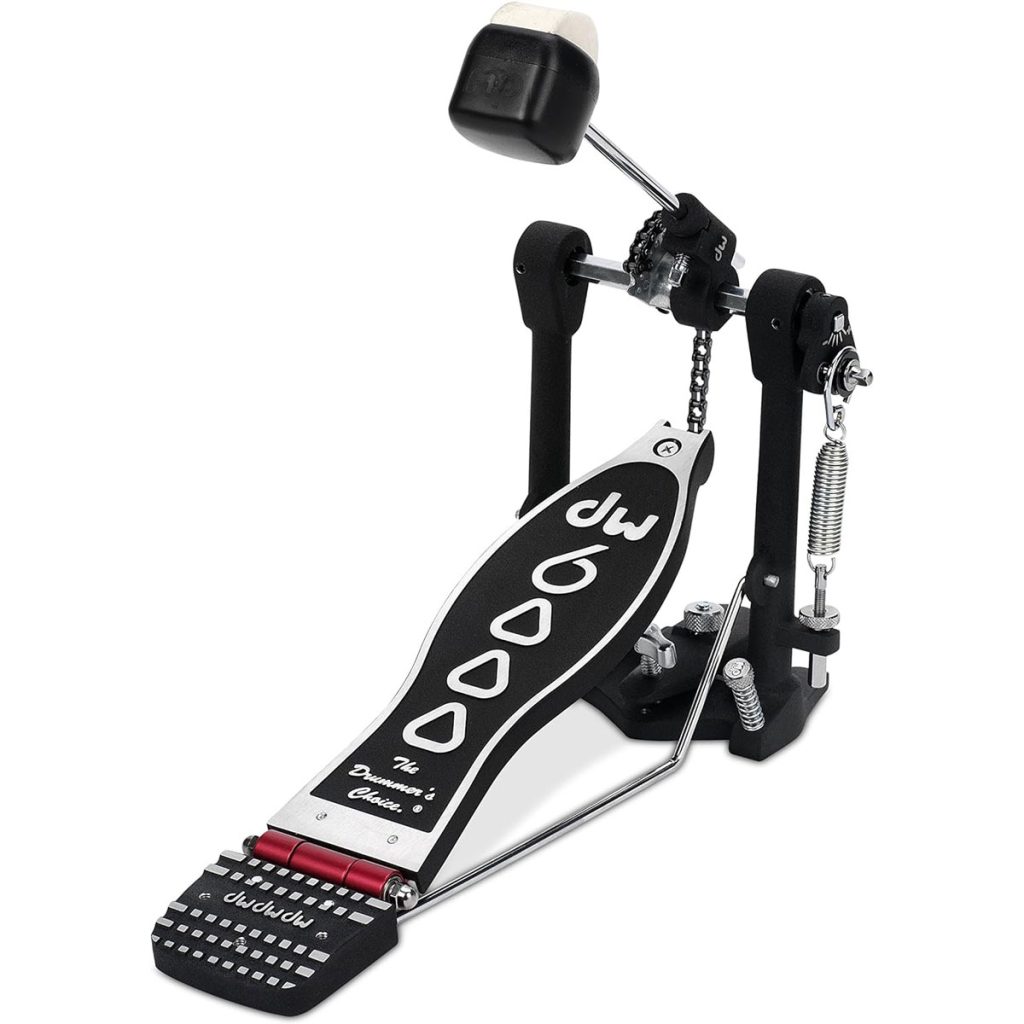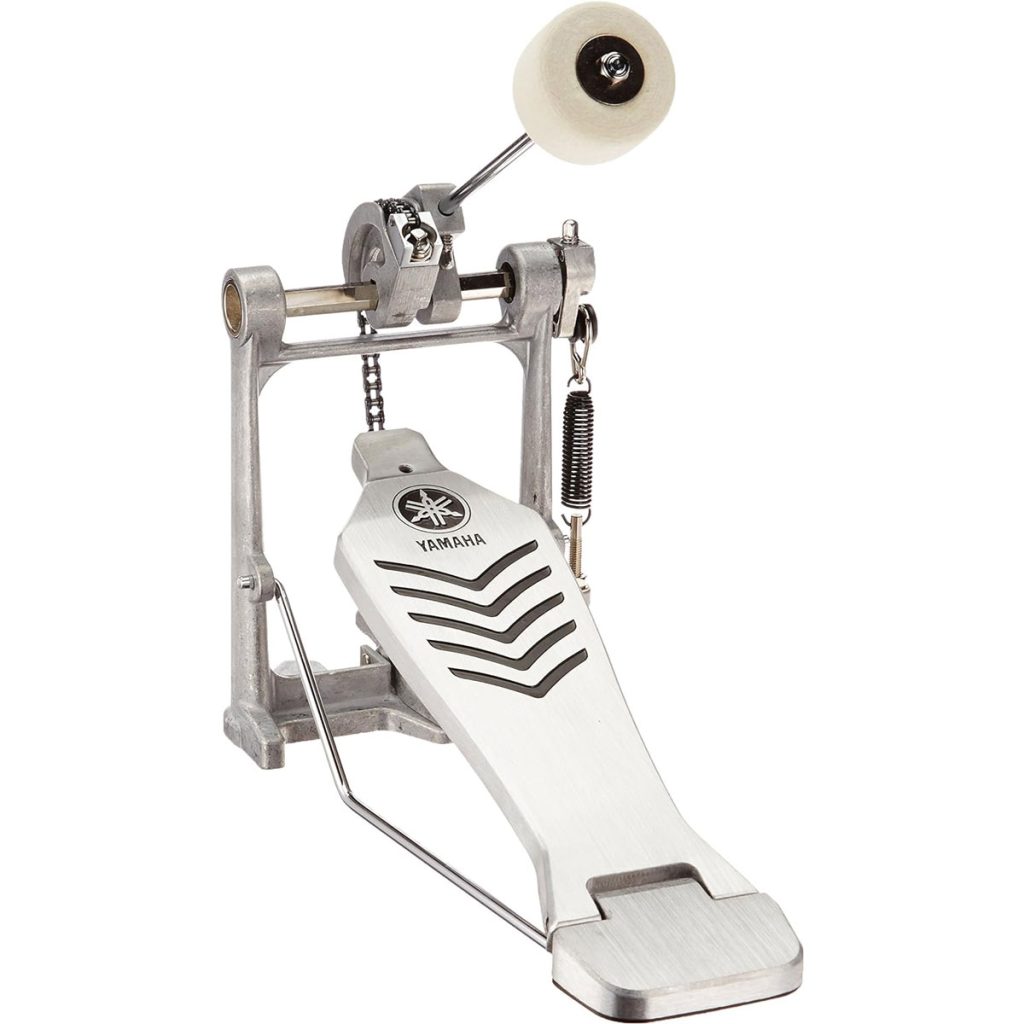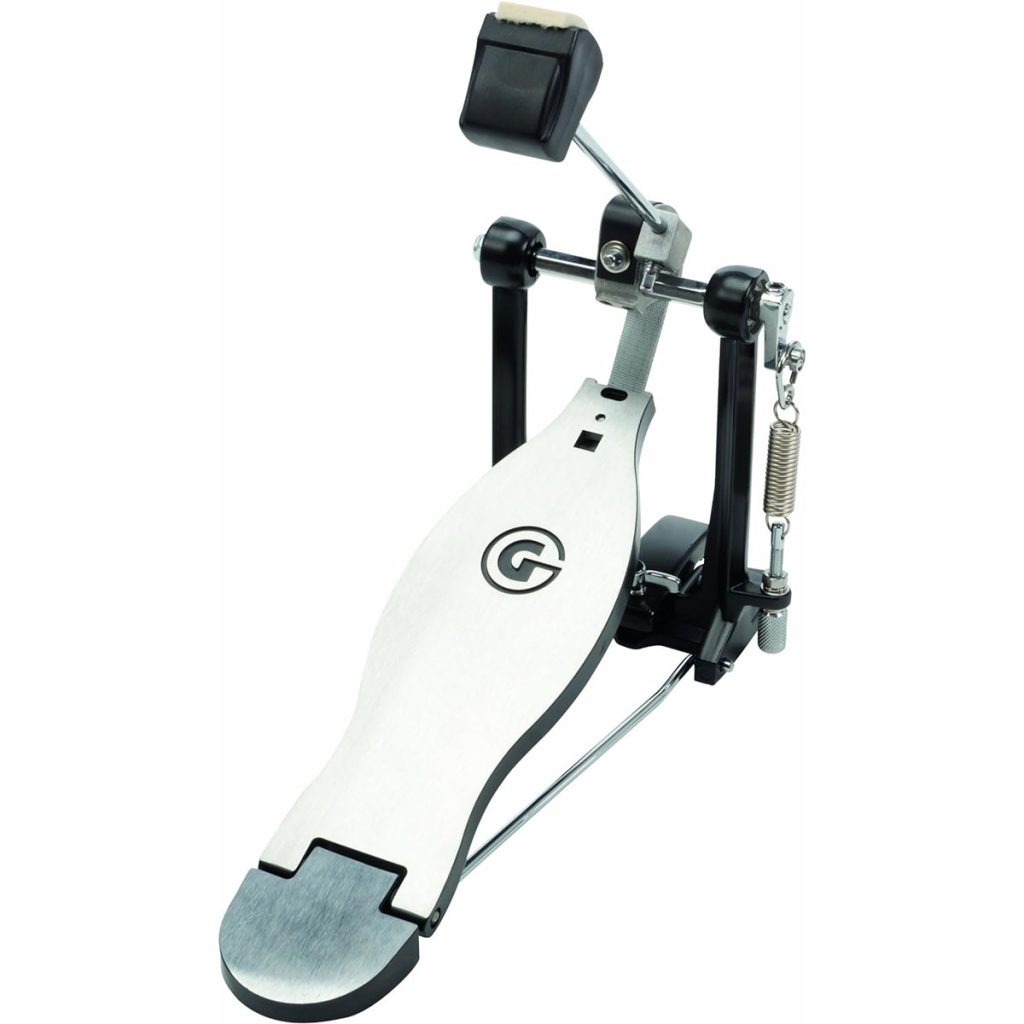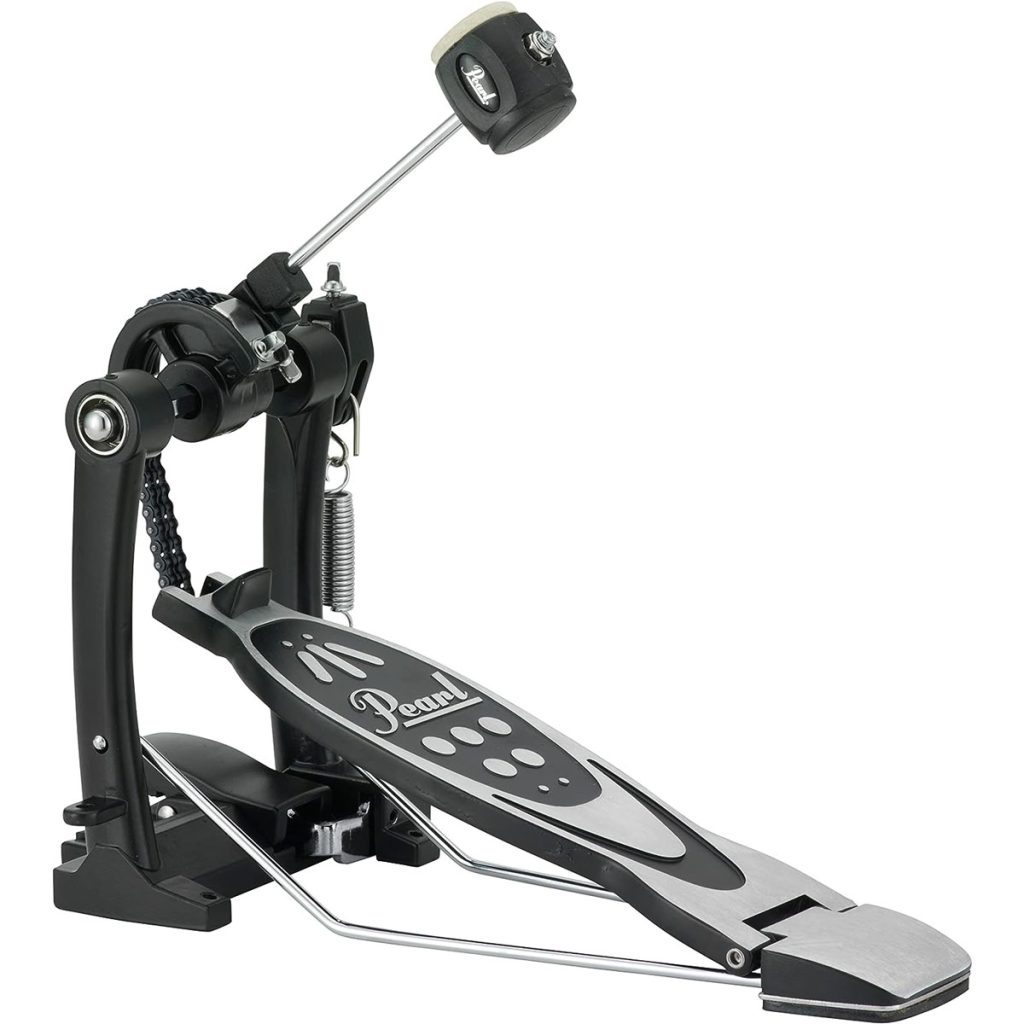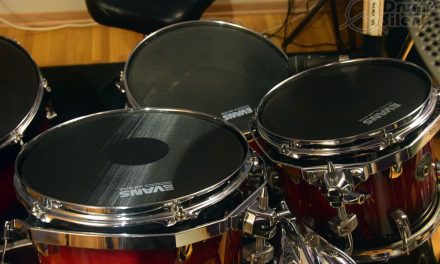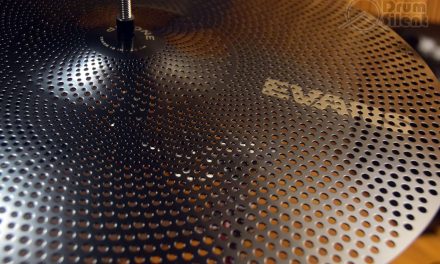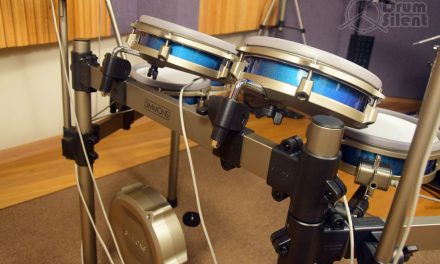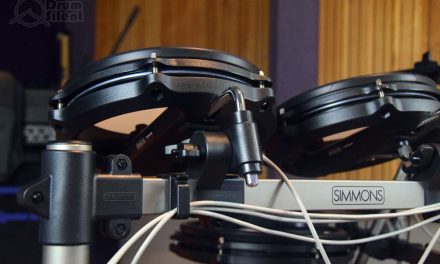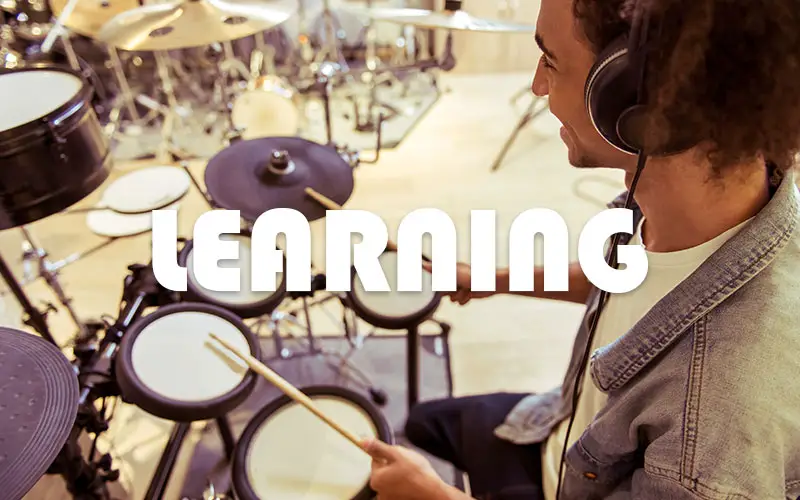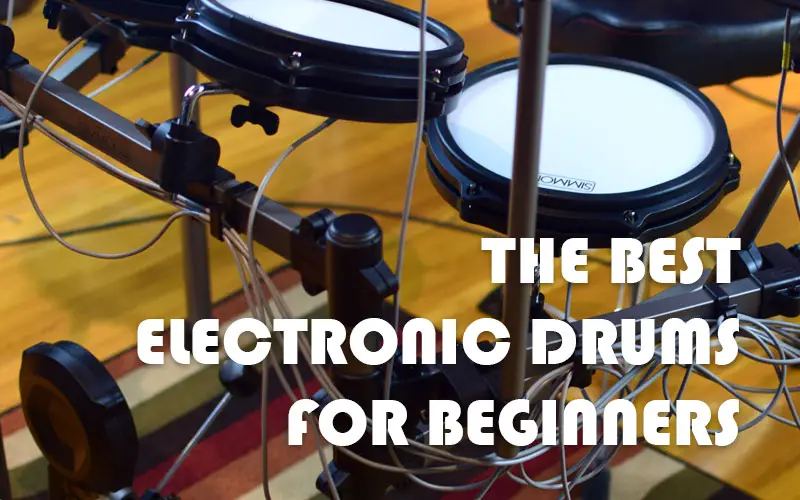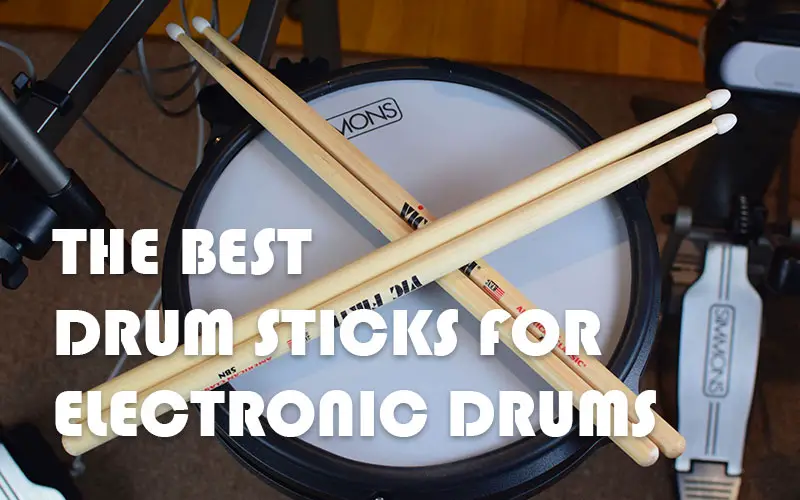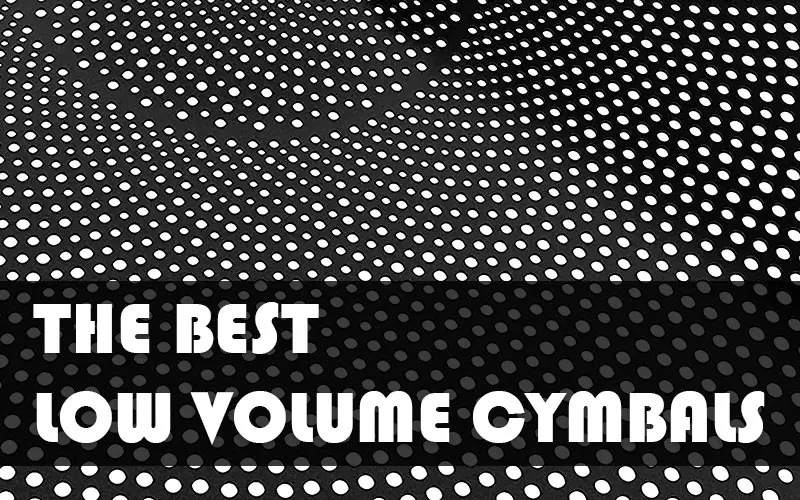Not all bass drum pedals are all that portable, but some are. Some bass drum pedals can be disassembled or folded up quickly and easily, which makes them easier to port around. Let’s take a look at some of our favorite portable bass drum pedals.
Ludwig Speed King Single Bass Pedal
The Ludwig Speed King pedal is designed to assemble and reassemble quickly, in just a matter of seconds once you know how to break it down. The direct drive linkage detaches from the foot board easily, and the base plate also detaches easily. It fits into a drawstring pouch which is provided with the pedal.
The new version of the Speed King is what Ludwig calls a remaster. It’s based on the original and legendary Speed King pedal with some modernized features. It has a curved rocker shaft with a direct drive linkage which gives it the fast, direct feel that drummers like about it. You’ll notice there’s no visible spring. It’s because there’s two springs inside of the pedal frame, one on each side, which are adjustable from the bottom of the pedal.
Tama “The Classic” Single Bass Pedal
This pedal from Tama, called The Classic, is designed to allow for vertical height adjustment of the entire frame and cam so that it can center up properly on smaller sized bass drums, such as 16 or 18 inch drums. The way it’s designed also makes it a little more portable, since it can be reduced in height and the beater and spring can fold downwards.
Since the vertical post on the frame is adjustable, the spring assembly is located on the top. This makes the spring easy to reach for adjustments while it’s attached to the kit. It has a single chain with a circular cam, and the chain can be shortened when you lower the upper assembly. It has a heavier feel during play, which is a little different than some of the speed focused pedals out there.
Sonor Perfect Balance Single Bass Pedal by Jojo Mayer
The Sonor Perfect Balance bass drum pedal is designed by Jojo Mayer, who is a legendary drummer that you might have heard of before. This pedal has just enough features to allow for fine tuned adjustments, and it can fold down flat for easier transport or compact storage. It also includes a carrying bag.
This is a strap drive pedal which uses a ballistic fiber strap on a linear cam instead of a chain or direct drive. The strap drive makes for a very smooth and reactive feel during play. There is a single post on the frame, and the rocker shaft is enclosed, which has an unconventional but simple look to it. The pedal board is elongated and has a completely smooth surface. There is a solid base plate for stability, which is uncommon for portable pedals, but it works on this one due to the folding design. This is a really slick pedal in terms of both look and feel.
DW 6000 Single Bass Pedal
The DW 6000 pedal is Drum Workshop’s take on the classic single pedal design with a radius rod base. These types of pedals allow you to detach the base easily and fold up the pedal into a more compact package, which makes them easier to fit into gear bags and haul around. They are also more lightweight.
The 6000 series pedal has three versions with different cams and drives. The AX version is an accelerator cam with a single chain, the CX version is a linear turbo cam with a single chain, and the NX version is a strap drive. All three version are otherwise the same in terms of features. Beater height and angle can both be adjusted, and the foot plate height changes with the beater angle. The frame has spurs to keep the pedal in place. It has a double side beater with felt and hard surfaces. It also has a spring tension lock. These are hard to go wrong with if you prefer this type of design.
This style of pedal is pretty common and many different drum gear brands offer something similar. Here’s some other options for similar style pedals that are worth checking out.
What To Look For in a Single Bass Drum Pedal
Bass drum pedals from various manufacturers share a lot of similarities but there are some differences to pay attention to that can affect the feel of the pedal or the ability to adjust certain aspects of the pedal.
Chain Drive, Direct Drive and Belt Drive
One of the most visible and obvious features of a bass drum pedal is the type of drive that the pedal is using. Chain drive pedals have a visible chain between the cam and foot board, belt drives use a strap which can be various materials other than a chain, and direct drives use a solid linkage between the cam and foot board.
Chain drives are the most common and they provide a natural feel with good response without being overly rigid. Chains can give a little during the upstroke of a bass drum pedal, which can contribute to a less direct feel between your foot and the beater swing. Single chain pedals can feel a little loose from side to side. Double chain pedals are more stiff from side to side and can provide more stability.
Belt drives are similar in feel to chain drives but depending on the material used for the belt they might feel more or less direct than a chain.
Direct drives have a solid linkage that doesn’t give or slack at all in either direction, and both the downstroke and upstroke of the beater swing feels like it’s connected directly to the movement of your foot.
The type of drive that a drummer will prefer is very personal and subjective in most cases, and if you’re not sure which one you might prefer it’s usually best to start out with a chain drive pedal and then change from there if you feel like you need a more or less direct feel to fit your play style and foot movements.
Cams
The cams are located on the rocker shaft and they connect the chain, belt or direct linkage to the foot board to swing the beater when you move your foot. On a chain or belt drive pedal, the chain/belt usually wraps partially around a circular cam. On direct drive pedals the direct drive linkage is attached to a single point on the cam.
Both a circular chain drive cam and a direct drive cam will feel linear, meaning that the radius of the cam doesn’t change during the movement of the beater. This creates a smooth, consistent beater speed throughout the motion. Some chain and belt drive cams have an offset shape to provide more acceleration as the beater gets closer to the bass drum head.
Foot Boards
Foot boards sizes and shape vary between pedals. Shorter foot boards that attach to a heel plate are common. Long foot boards without a heel plate are also popular but not as common. Longer foot boards can be useful for techniques that incorporate the heel and they can provide better full-foot control. Long boards can also provide better control for drummers with larger feet.
Smoothness of the foot board is also something to watch out for. Some drummers prefer a more tactile surface on the foot board, and some prefer a smooth surface. Drummers who play barefoot or who want to be able to slide their foot around the surface for various techniques will usually prefer a smooth surface on the foot board. Drummers who want to keep their shoes from slipping on a foot board might prefer a more tactile surface.
As far as other foot board features go, some pedals allow you to adjust the foot pedal position forward or backward, or raise and lower the foot pedal height separately from the beater angle.
Other Settings and Features
There are some other common features to look out for. Spring tension locking mechanisms are useful for keeping your spring tension from loosening up while you play. Spurs on the front of the pedal can help keep the pedal in place for aggressive drummers, but this isn’t usually as important if your bass drum stays solidly in place. Adjustable rockers are sometimes used for adjusting the beater angle if the beater doesn’t rotate on the rocker shaft. Beaters are sometimes double sided to provide both a felt surface and hard beater surface option.

